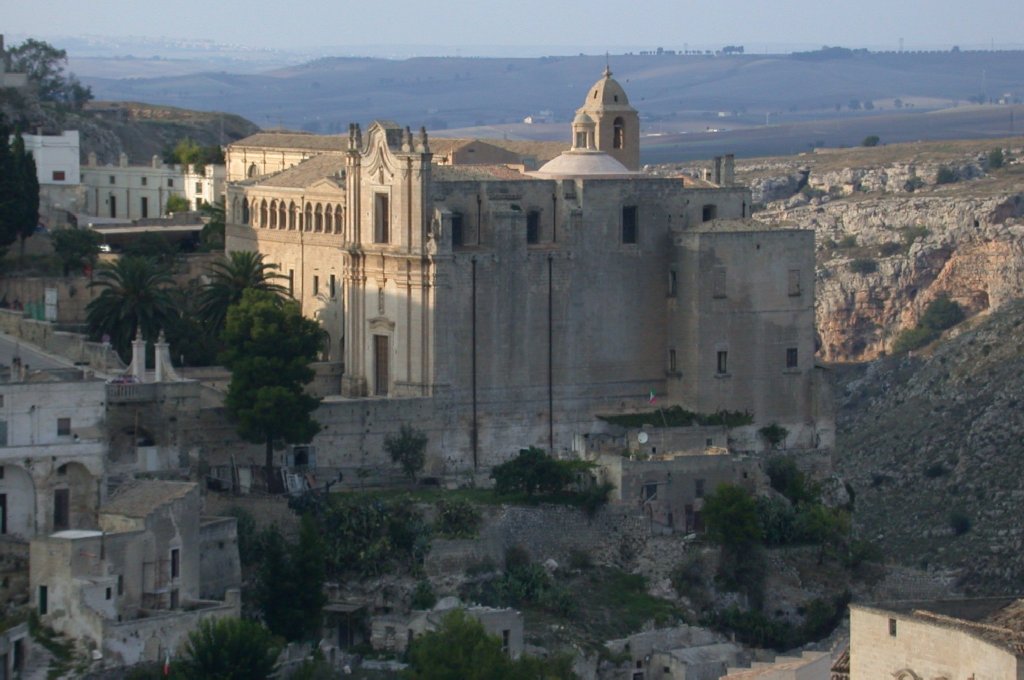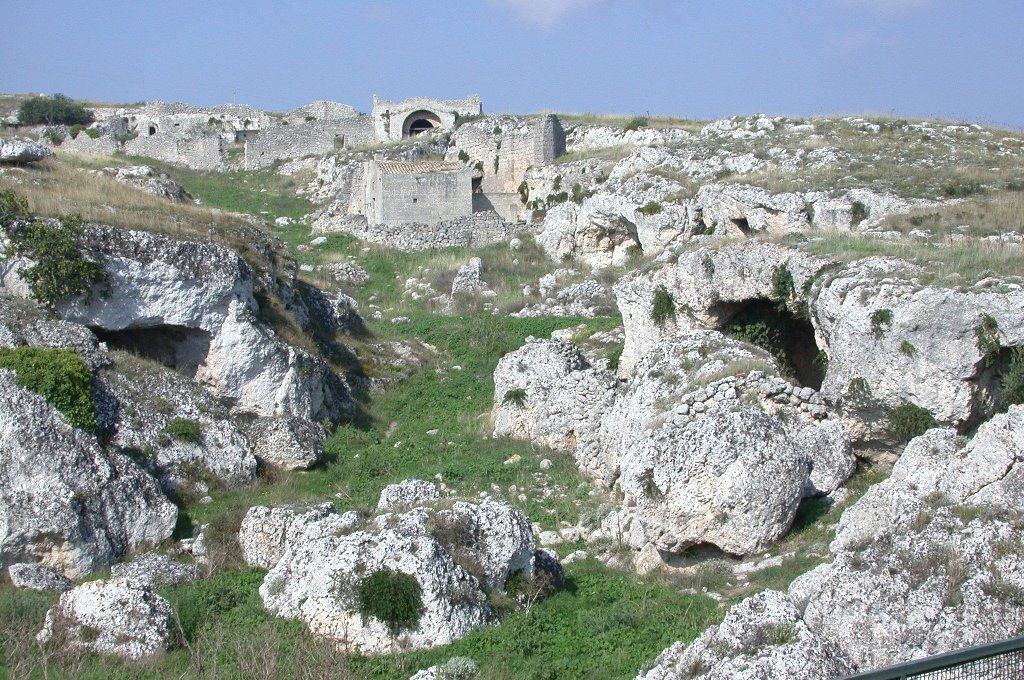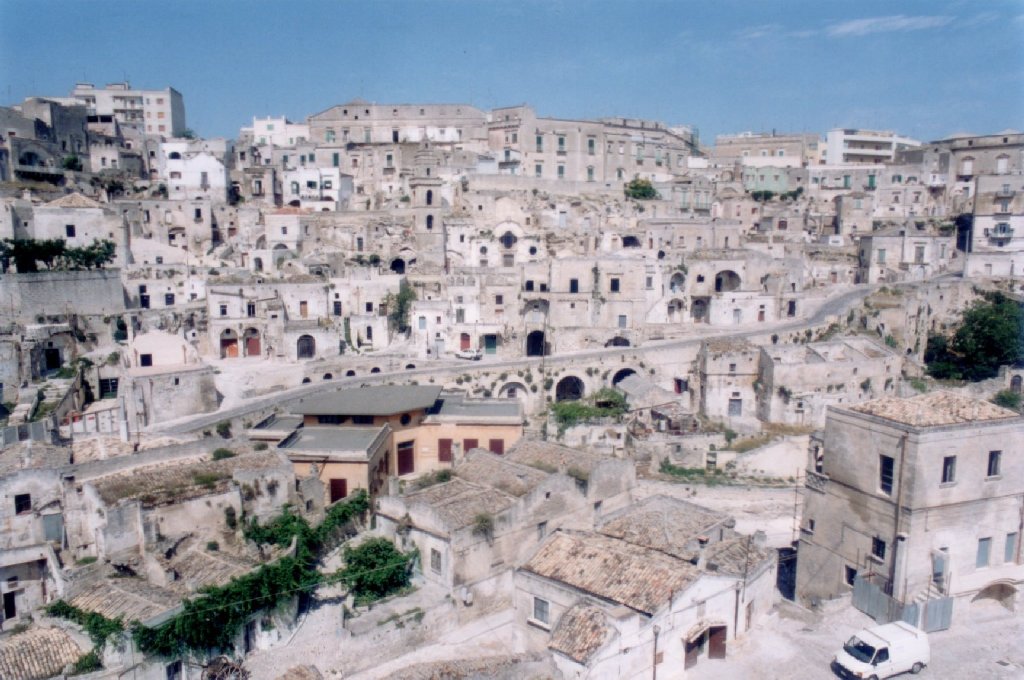Located in the southern Italian region of Basilicata, The Sassi and the Park of the Rupestrian Churches of Matera comprises a complex of houses, churches, monasteries and hermitages built into the natural caves of the Murgia. Covering an area of 1,016 ha this remarkable and intact troglodyte settlement contains more than a thousand dwellings and a large number of shops and workshops. The property was first occupied during the Palaeolithic period and shows evidence of continuous human occupation through several millennia until the present day, and is harmoniously integrated into the natural terrain and ecosystem.
The site is composed of the ancient districts of the city of Matera and of the Park of the Rupestrian Churches which stretch over the Murgia, a calcareous highland plateau characterized by deep fault fissures, ravines, rocks and caves. The morphology of the territory, characterized by deep ravines (gravine) and bare highland plateaus, integrated with ancient cave churches, shepherd tracks marked by wells, and fortified farmhouses, form one of the most evocative landscapes of the Mediterranean.
The site was first occupied from the Paleolithic to the Neolithic era with occupation of the natural caves intensifying from the 8th century, when the city started to overshoot the boundaries of the defensive walls dated to the Roman Age and constructed all around the part of the city called Civita, which was the first inhabited nucleus. The earliest houses in the settlement were simple caves enclosed by a wall of excavated blocks on the two grabiglioni, Sasso Caveoso and Sasso Barisano. A Romanesque cathedral was built on the Civita between the two Sassi in the 13thcentury.
The historic centre retains the distinction of these the two districts, the Barisano and Caveoso, and also includes the 15th century Casalnuovo district and the 17th-18th century backbone of the city called “Piano”.


